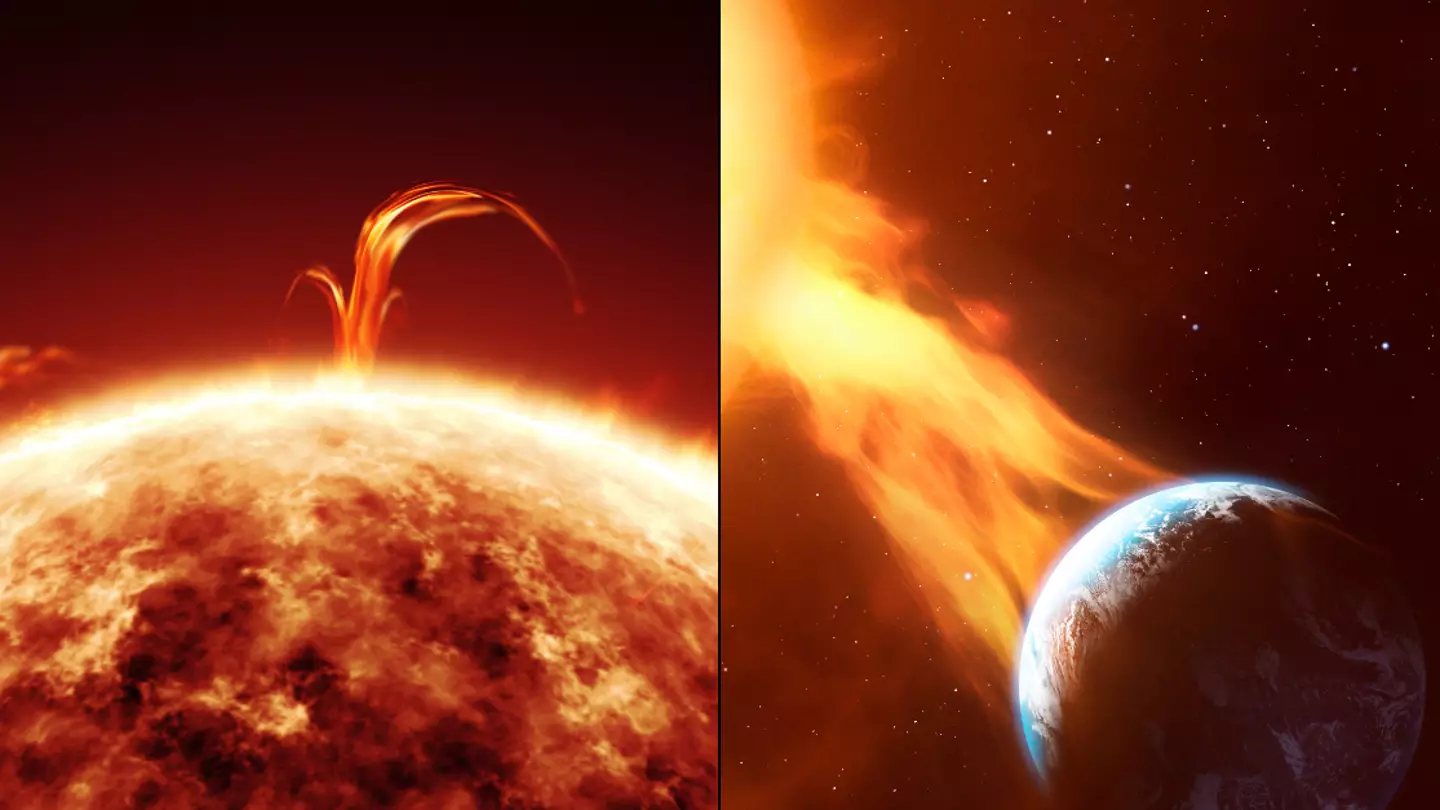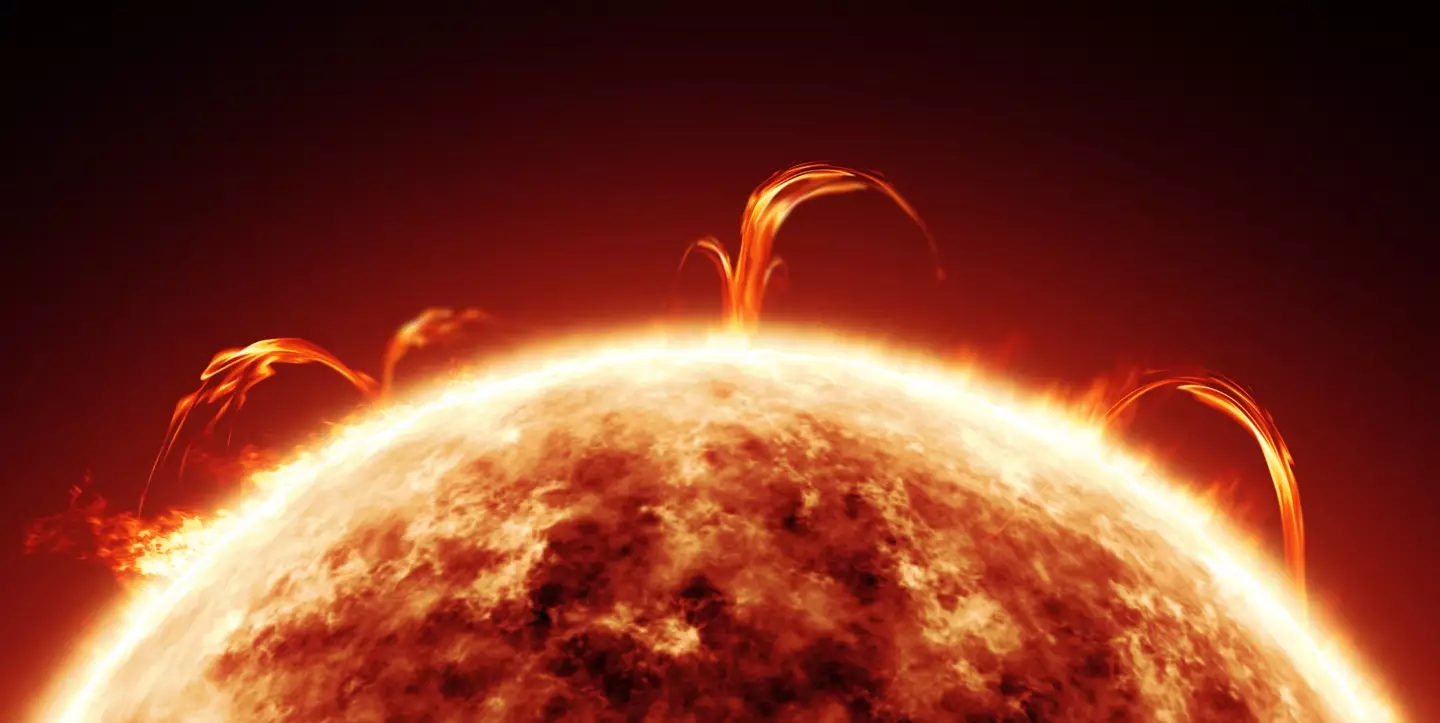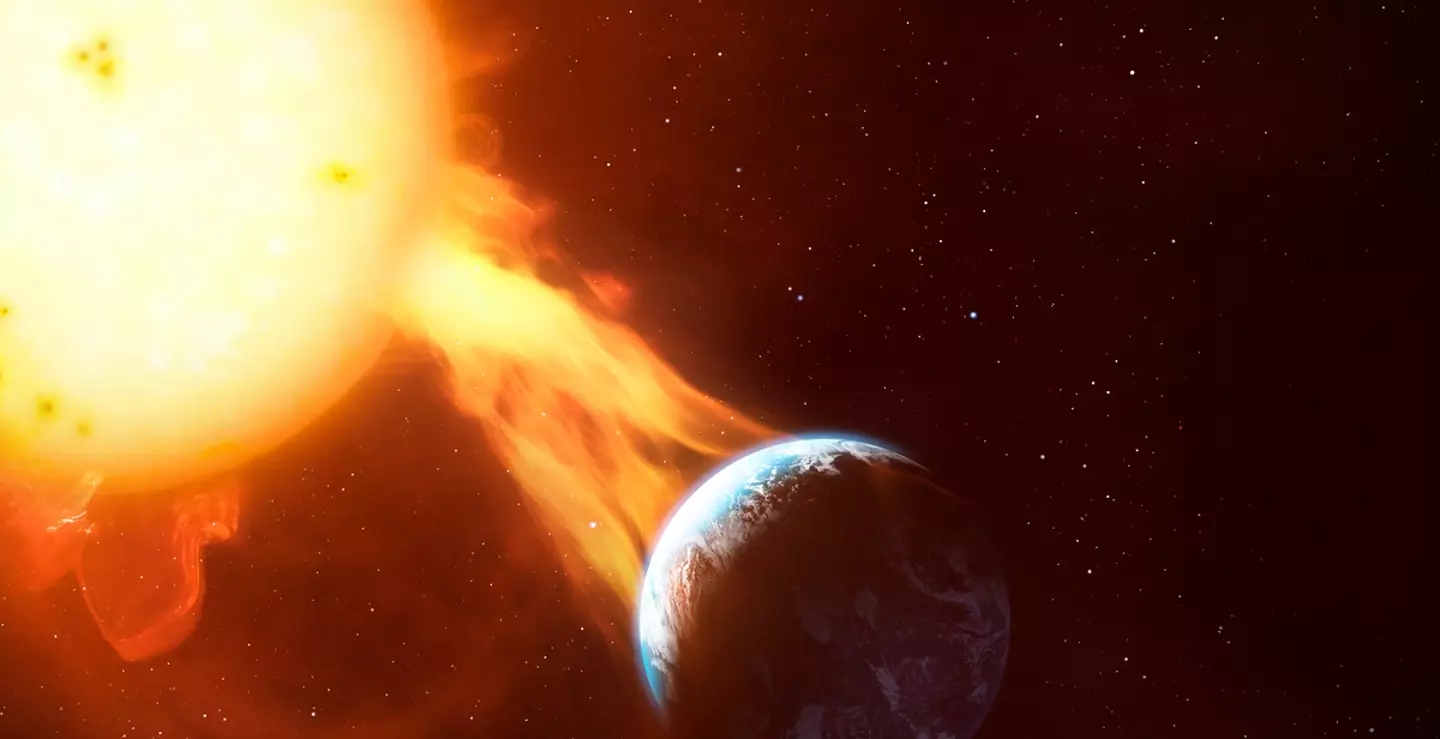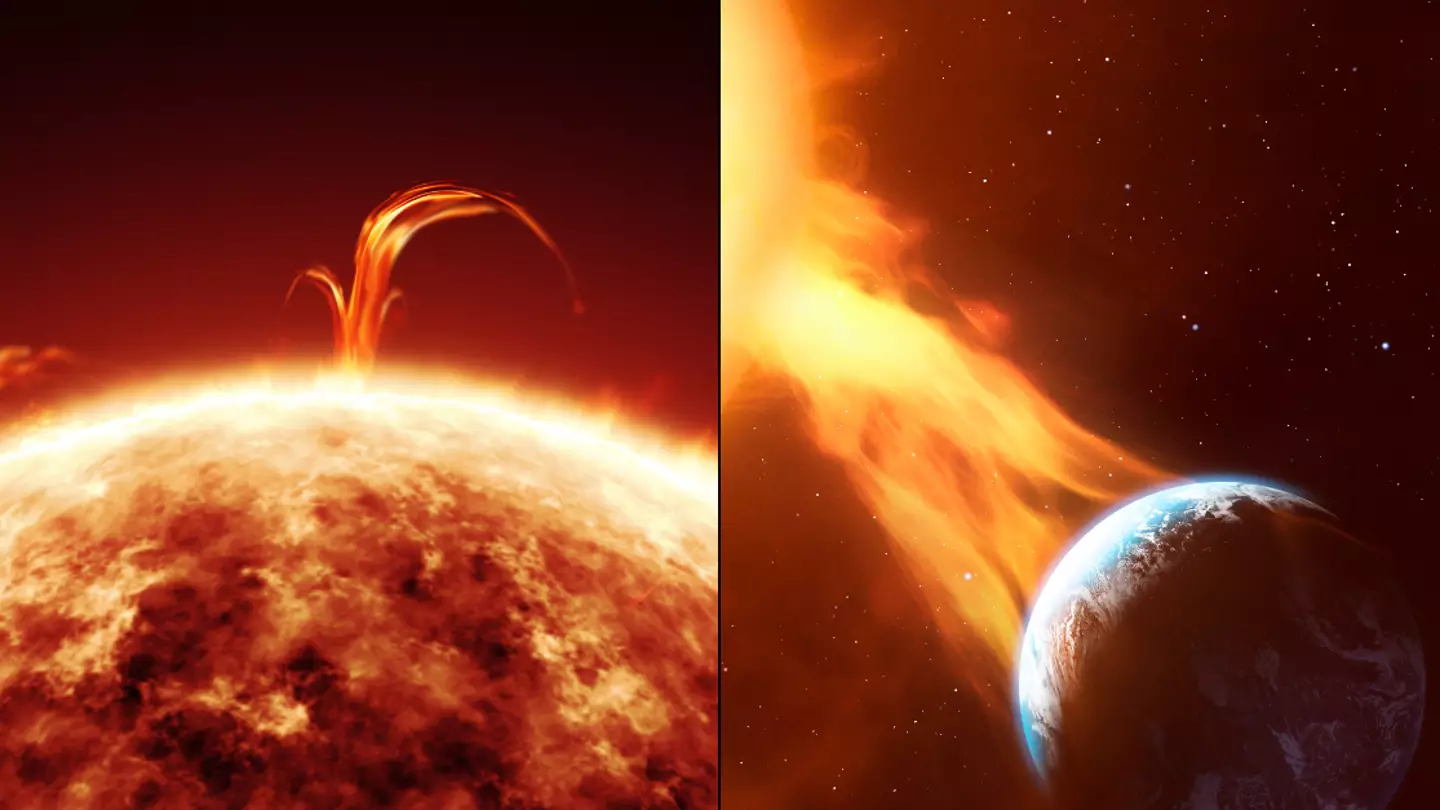
A ‘severe solar storm' is headed our way
Brace yourself for an approaching ‘intense solar storm' that might greatly affect our technology.
The National Oceanic and Atmospheric Administration (NOAA) in the US has issued a warning about potential technological blackouts beginning tonight (10 May).
Space weather forecasters have alerted that a Severe (G4) Geomagnetic Storm Watch has been issued for Friday evening.
The SWPC cautioned that these two sunspot clusters are magnetically intricate and significantly bigger than our planet. They have consistently produced M-class flares (minor to moderate).
RGN 3664, the combined sunspot region, is still expanding and becoming more magnetically complex, posing a greater risk of increased solar flare activity.

Two sunspots have merged to form a much larger feature. (Getty Stock Image)
That sounds quite technical, but basically it means that two large sunspots have combined and released a series of solar flares.
Solar storms can cause disruptions to power grids, radio systems, and the internet. This particular solar storm is exceptionally powerful.
Actually, the most recent occasion a storm was classified as ‘severe' was back in 2005.
In the UK, the Met Office has issued a warning about high solar activity. You will be able to witness the storm in the northern part of the UK from Friday night until tomorrow morning.
If you live in the southern part of the UK, there is a possibility that the aurora may be visible to everyone in the country. So, don't exclude yourself from the chance of seeing it.
However, the recent massive solar storm is not just about the chance to witness beautiful lights in the sky.

It's not going to look exactly like this but you get the gist. (Getty Stock Image)
The UK may experience disruptions in radio communications, whereas a larger portion of the US is expected to be affected.
Solar weather can cause harm to communication systems and power supply by damaging electrical grids and satellites.
Geomagnetic storms have the potential to affect both infrastructure in near-Earth orbit and on Earth's surface. This can lead to disruptions in various areas such as communications, the electric power grid, navigation, radio, and satellite operations.
The operators of these systems have been informed by SWPC to take protective measures.
Some will watch a light show in the sky, while others will need to prepare for possible power outages and internet disruptions.
Technology outages may persist for several hours, but the storm's intensity is predicted to diminish as the weekend progresses.
Featured Image Credit: Getty Stock Images













